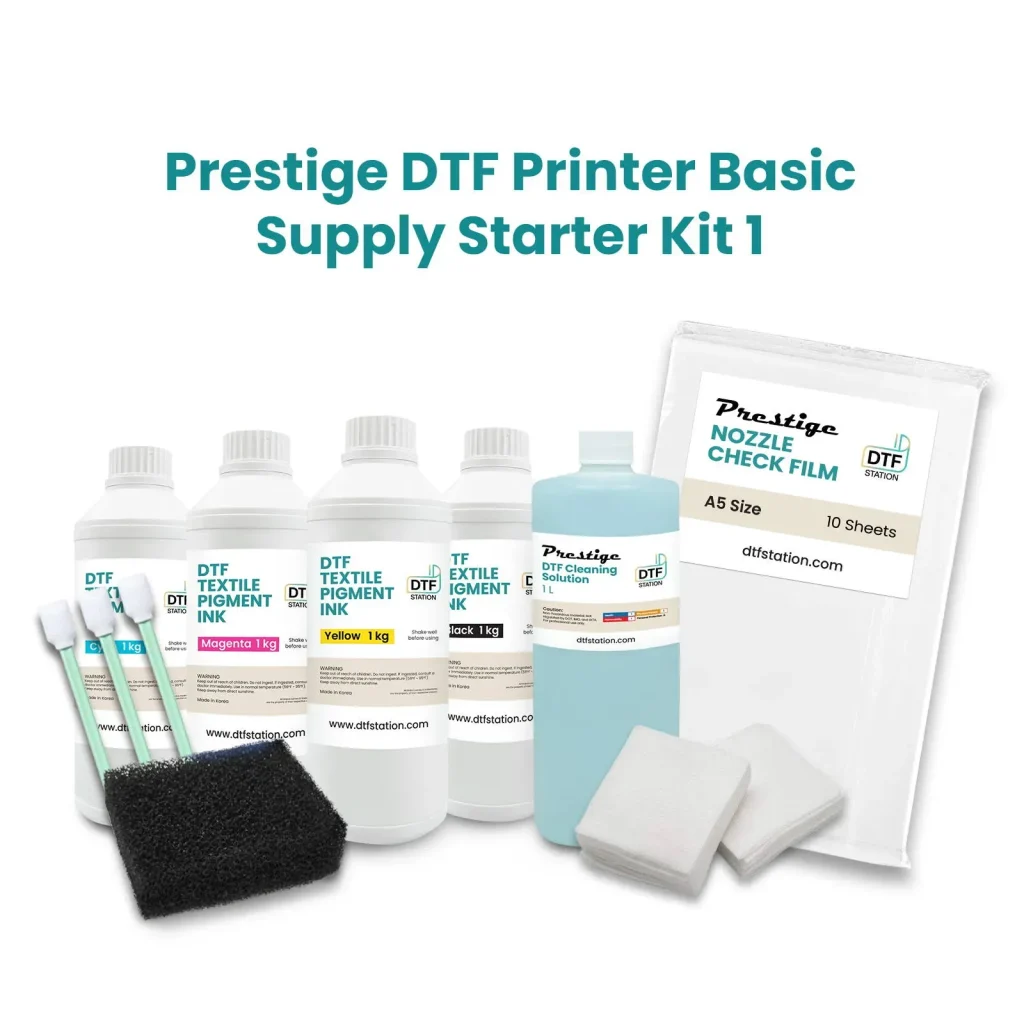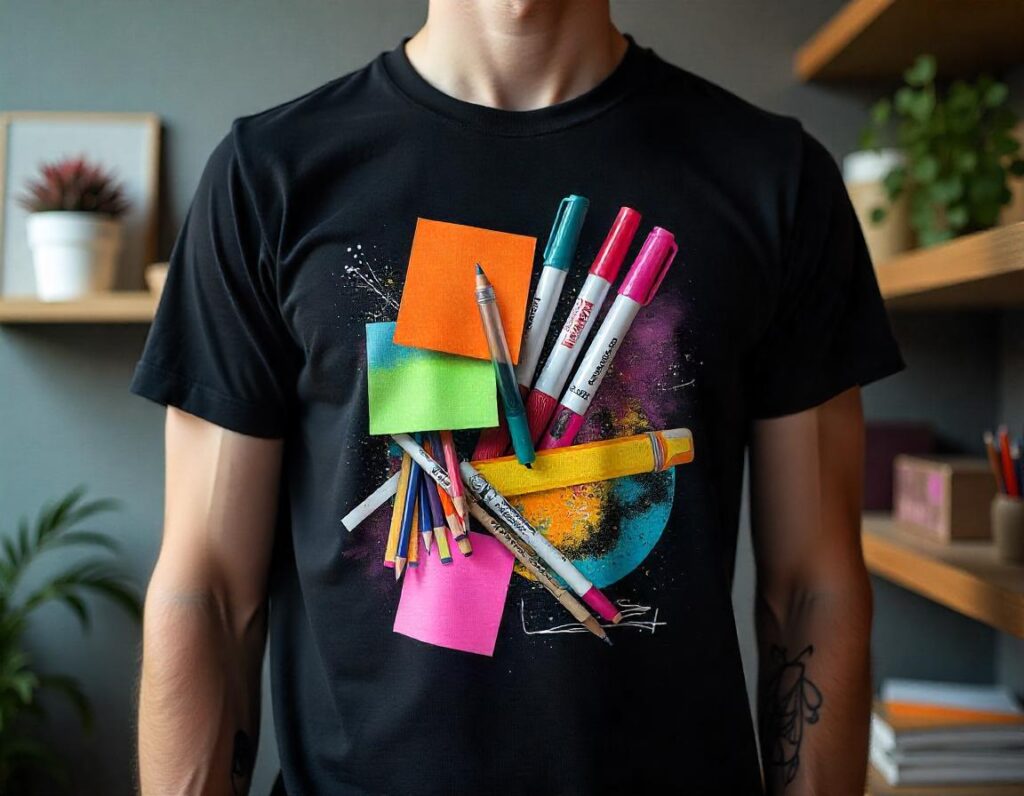DTF Supplies have become an essential component for anyone looking to explore the innovative realm of Direct to Film (DTF) printing. This advanced method, which involves vibrant heat transfer techniques, allows for high-quality designs to be seamlessly applied to a variety of fabrics. By acquiring the necessary equipment and materials, like a DTF printer and heat transfer film, you can elevate your printing capabilities significantly. Not only do these supplies enhance the aesthetic quality of your creations, but they also ensure durability through the use of adhesive powder during the transfer process. In this guide, we will delve deeper into the essentials you need to kickstart your DTF printing journey and showcase the art of crafting stunning textile designs.
Also known as Direct to Film technology, the process of applying designs directly onto transfer film has garnered much attention from both hobbyists and professionals alike. This innovative approach is celebrated for its versatility in fabric printing, where designs can be transferred with remarkable clarity and consistency. The art of printing onto textiles using specialized equipment like DTF printers opens new avenues for creativity, enabling users to bring their artistic visions to life efficiently. Essential items, such as heat transfer film and bonding adhesive, play a vital role in ensuring the permanence of prints. In this discussion, we will outline the core supplies and methods that can help you master this exciting field of transfer printing.
Exploring DTF Printer Options
When starting your journey in DTF printing, selecting the right DTF printer is paramount. Specialized printers, such as modified Epson or Brother models, are built to efficiently handle DTF inks and optimize print quality. The choice of printer determines not just the vibrancy of your prints but their overall durability on various fabric types. Therefore, it’s essential to research printer specifications and reviews to find one that matches your specific needs, whether it’s for personal use or a larger scale printing business.
Consider additional features like print speed, ease of use, and the availability of support for maintenance. Investing in a reliable DTF printer can save you significant time and costs, ensuring that your production process remains smooth. Additionally, keep in mind that not all printers are created equal; some may come with bundled software or warranties, which can be beneficial as you navigate through your printing process.
Choosing the Right Heat Transfer Film
Heat transfer film plays a crucial role in the DTF printing process, as it serves as the medium through which your designs are printed and later transferred onto fabrics. The quality of the film directly impacts the vibrancy and durability of the final product. High-quality films offer better adhesion and produce smoother prints. Look for films specifically crafted for DTF applications, available in various finishes such as matte, glossy, and transparent, to match your design vision.
In addition, before purchasing heat transfer films, be sure to evaluate their compatibility with the fabric types you intend to use. Some films work better with certain materials, affecting both the print quality and adherence over time. Researching your options and potentially testing a few films can make a significant difference in achieving professional results with your DTF printing projects.
Understanding DTF Adhesive Powder Varieties
Adhesive powder is an essential component of DTF printing, ensuring that your vibrant designs adhere well to the fabric. When selecting adhesive powder, look for options that are specifically formulated for use with DTF inks and films to ensure compatibility and optimal results. The powder acts as a bonding agent, allowing the inks to securely adhere to the fabric during the heat transfer process, thus preventing any peeling or fading over time.
It’s also important to consider the application method for the adhesive powder. Techniques can vary, with some users preferring to sprinkle the powder on, while others may opt for a more controlled application using a shaker or specialized tool. Being consistent in this application technique is key to achieving uniform prints across different projects.
Tips for Successful Fabric Pairings
Not all fabrics react the same way to DTF printing, which makes selecting the right material critical for success. While DTF printing is versatile and compatible with a variety of fabrics including cotton and polyester blends, understanding the properties of each fabric type can greatly enhance the final product quality. Always run test prints on sample materials to ensure that your prints adhere correctly and maintain vibrancy long-term.
For optimal results, consider the weight, texture, and stretchability of the fabric. Heavier fabrics may require different temperature adjustments during the heat transfer process compared to lighter materials. Familiarity with fabric characteristics will not only enhance adhesion but also improve the longevity of your printed designs.
Benefits of using DTF Supplies
Utilizing high-quality DTF supplies opens up a world of possibilities for both hobbyists and professionals in the printing industry. DTF printing provides the ability to create stunning and intricate designs with exceptional color depth and clarity. The use of DTF printers, films, inks, and adhesive powders creates a seamless workflow where creativity knows no bounds.
Moreover, the durability of DTF prints means that end products can withstand repeated washing and heavy wear, making them perfect for custom apparel and promotional materials. Your investment in reliable DTF supplies ensures that your prints stand the test of time while satisfying your clients’ needs for quality.
The Future of DTF Technology and Supplies
As technology advances, the future of DTF printing supplies continues to evolve. Innovations in ink formulations, film technologies, and printer capabilities are rapidly enhancing the landscape of direct-to-film printing. Staying ahead of trends not only improves the quality of the prints but also expands the creative possibilities available to users.
With increased demand for custom printing solutions, businesses that embrace new DTF technologies can cater to a growing market looking for unique and durable printed items. Educating yourself about emerging products and techniques will be essential in fully leveraging the capabilities of DTF supplies and staying competitive in the industry.
Frequently Asked Questions
What equipment do I need to start using DTF Supplies for Direct to Film printing?
To start with DTF Supplies for Direct to Film printing, you’ll need several key items including a DTF printer, heat transfer film, DTF inks, adhesive powder, a heat press, and curing equipment. These supplies are essential for achieving high-quality prints on various fabrics.
How does a DTF printer work with heat transfer film and adhesive powder?
A DTF printer prints designs onto heat transfer film using DTF inks. After printing, adhesive powder is applied to the wet ink, which bonds with the design during the curing process, ensuring a durable transfer onto fabrics.
What types of fabrics are compatible with DTF printing supplies?
DTF printing supplies work well on a variety of fabrics, including cotton, polyester, and blends. It’s recommended to test samples to ensure the best adhesion and print quality on your chosen material.
Can I use regular inks with DTF Supplies in Direct to Film printing?
No, you should use specific DTF inks that are designed for use with DTF Supplies. Regular inks may not adhere correctly or yield the vibrant results that DTF printing is known for.
What are the benefits of using heat transfer film in DTF printing?
Heat transfer film is specially coated to optimize the transfer process in DTF printing. It provides vibrant and durable designs that can adhere well to a variety of fabrics, making it ideal for high-quality garment production.
How important is the curing process when using DTF Supplies?
The curing process is crucial in DTF printing as it ensures that the adhesive bonds the printed ink to the fabric effectively. Proper curing guarantees the durability and longevity of the prints, making it a vital step in the workflow.
| Key Points | Details |
|---|---|
| What is DTF Printing? | DTF printing uses special printers to apply designs onto a film, which can then be transferred onto fabrics using heat. |
| Essential Supplies | 1. DTF Printer 2. Heat Transfer Film 3. DTF Inks 4. Adhesive Powder 5. Heat Press 6. Curing Equipment 7. Design Software |
| Step-by-Step Process | 1. Create Your Design 2. Printing 3. Apply Adhesive Powder 4. Cure the Print 5. Transfer to Fabric |
| Tips for Success | – Ensure fabric compatibility – Use high-quality supplies – Experiment with settings |
Summary
DTF Supplies are essential for anyone looking to tap into the vibrant world of Direct to Film printing. This innovative printing method provides unparalleled versatility and quality, allowing creators to apply intricate designs to various fabrics with ease. By investing in the right equipment, such as DTF printers, heat transfer films, and high-quality inks, users can create stunning prints that not only stand out but also brand their unique style. Moreover, mastering the step-by-step process—from design creation to fabric transfer—ensures successful outcomes for both beginners and seasoned professionals. As you explore DTF Supplies, remember to keep experimenting and refining your techniques, paving the way for endless creative possibilities in your projects.



